Archive of the Month
Celebrating Christmas with the Red Book of Ossory
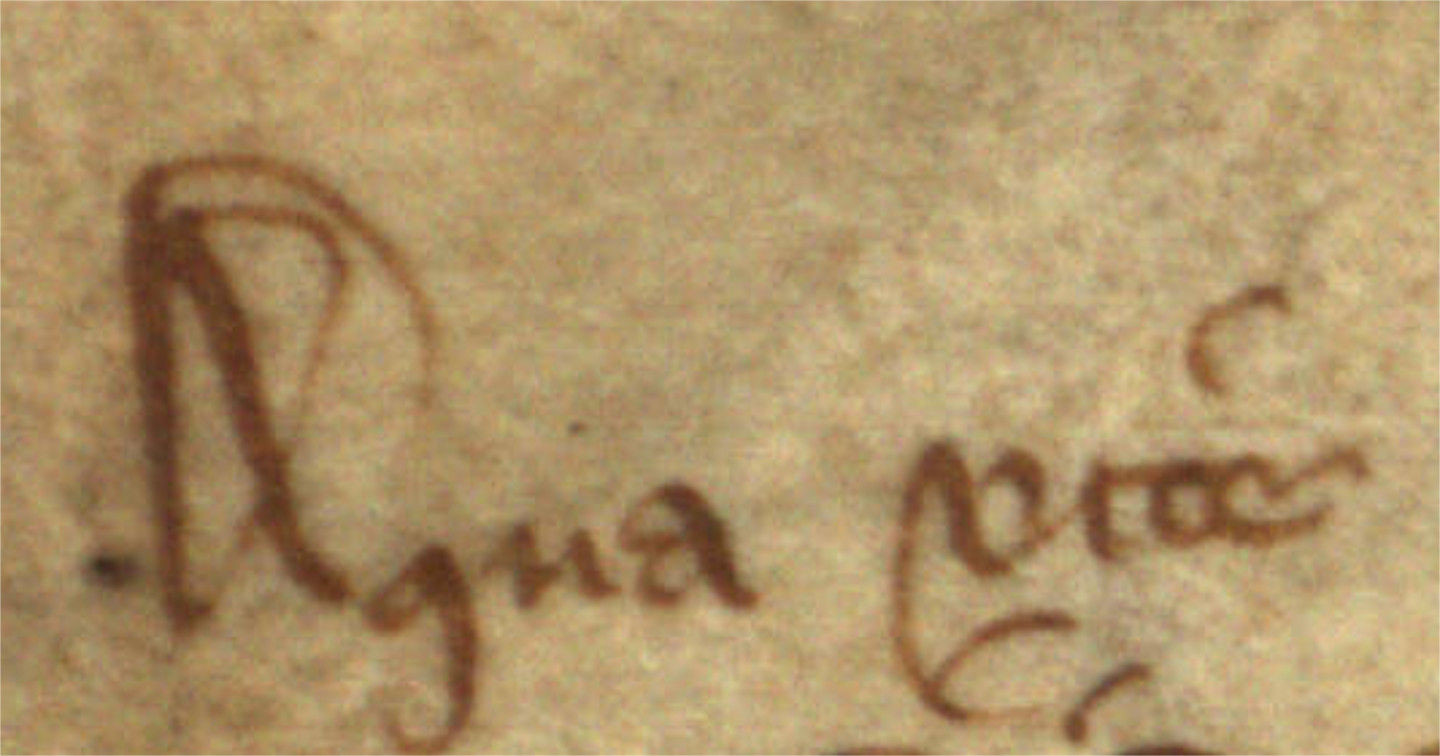
By Dr Adrian Empey
The Red Book of Ossory, containing 79 vellum leaves, was composed largely in the 14th century. Later entries were added, the latest from the reign of Elizabeth I. The Red Book derives its name from the colour of the leather binding, faded on the outside, but still visible inside the cover.
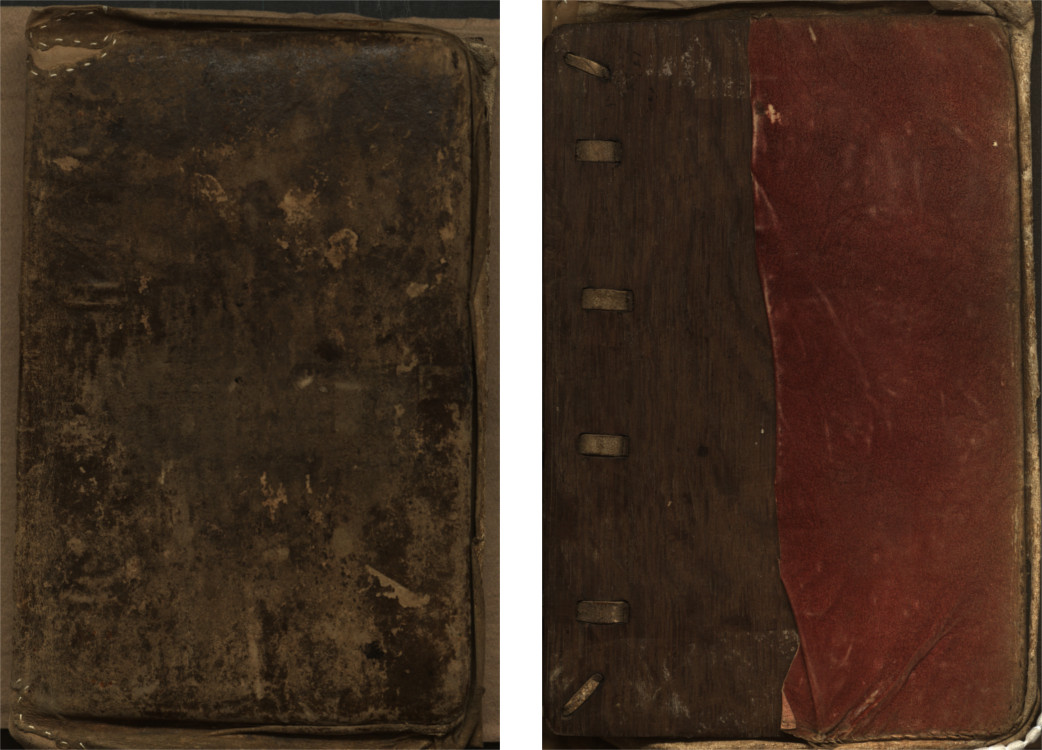
Like other medieval episcopal registers, it contains a wide range of documents that defy classification, the choice of which depended on what was important to individual bishops, in this case by one of the most extraordinary bishops ever to occupy the see of Ossory, Richard Ledred, whose tempestuous episcopate lasted from 1317 to about 1361. For further biographical information about Ledred, as published in the clerical succession list of the diocese of Ossory compiled by Canon JB Leslie, and edited by Canon David Crooks, see this link
Ledred’s fame rests primarily on his obsession with witchcraft. He was responsible for hounding the unfortunate Alice Kyteler, whose children by previous marriages successfully tried to ‘frame’ her on sorcery charges in 1324. Ledred left his own account of these proceedings, which are of outstanding interest to historians of European witchcraft trials. [These proceedings were published by Thomas Wright in 1843 under the title, A contemporary narrative of the proceedings against Dame Alice Kyteler (Camden Society, no. XXIV). A reading of them leaves little doubt that they were composed by the bishop as an apologia pro vita sua.]
Strangely, there is no mention of Alice in the Red Book. As one might expect in such a register, much of it concerns ecclesiastical legislation (diocesan and provincial), or practial matters relating to diocesan administration, such as diocesan taxations. [Although the Red Book has never been published, a catalogue of its contents may be found in Hugh Jackson Lawlor, ‘Calendar of the Liber Ruber of the diocese of Ossory,’ in Proceedings of the Royal Irish Academy, Section C , xxvii (1908/1909), 159–208.]

There are numerous documents of legal interest, such as the provisions of Magna Carta. More exceptionally the register contains a lengthy medical treatise on aqua vitae, or what we would call cognac, that occupies three and a half closely written pages in Latin shorthand. While such a treatise is perhaps very seasonal, the reasons for its inclusion in the register were more medicinal, perhaps in some way linked to the Black Death that ravaged Kilkenny in 1348. Nevertheless it does provide the earliest known recipe for distillation known to exist in any Irish manuscript.

Another reason for the international fame of the Red Book is the collection of 60 Latin lyrics. All but 13 of these appear to have been composed by Ledred. In one intriguing entry which translated runs as follows, Ledred explains what he had in mind when he composed them:
Be advised, reader, that the bishop of Ossory has made these songs for the vicars of the cathedral church [of St Canice] … to be sung at the great festivals and for entertainment (solaciis), so that their throats and mouths, consecrated to God, may not be polluted by songs that are
lewd (cantilenis teatralibus, turpibus et secularibus). Since they are choristers (cantatores), let them provide tunes suitable for these verses.
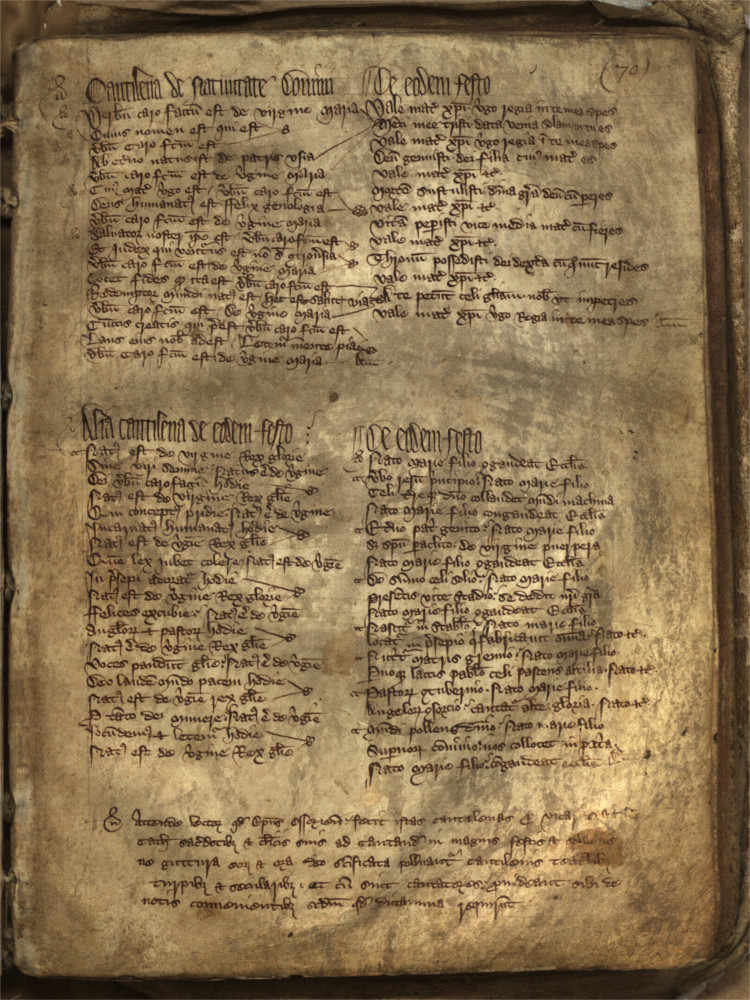
Songs in honour of the Virgin Mary are not necessarily related to Christmas, but since Ledred intended them to be sung at the great festivals and on other occasions, it looks very much as though he had the celebration of Christmas chiefly in mind as no less than 25 songs relate to the nativity. Eleven others relate to Easter, one to the Annunciation and the remainder to devotional subjects. Most remarkably, a number of the songs are prefixed by fragments of Middle English or French, indicating that Latin verses could be sung to the tune of these ‘minstrel’ songs. The heading of Easter song Iam Christo moriente luxit ecclesia, for example, is prefaced, ‘Haue mercie on me, frere, barfote that ygo’. A nativity song Peperit virgo , virgo regia is headed, ‘Mayde[n] y[n] the moore [L]ay’. Needless to add, these lyrics have excited a great deal of interest internationally.
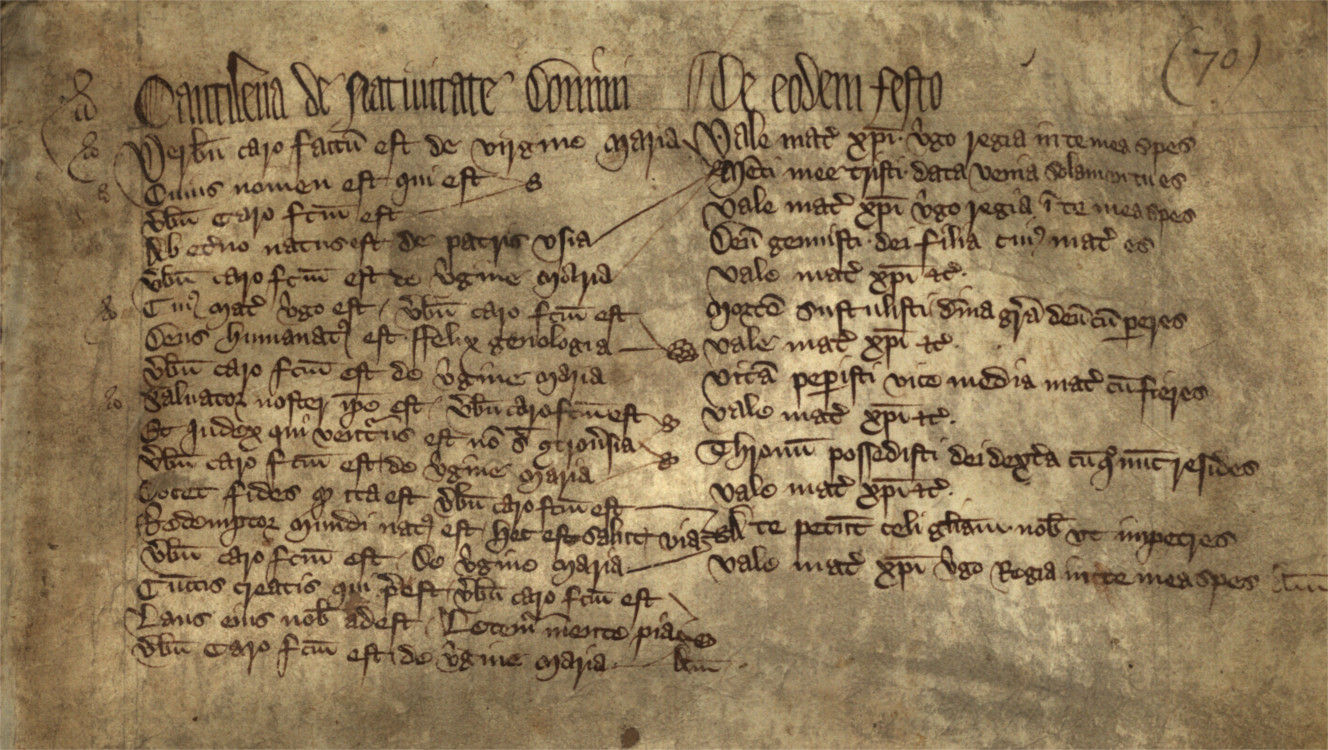
The first of these songs, which appears on folio 70 in the left margin, is headed: Cantilena de nativitate Domini [a song of the Nativity of (our) Lord]. The heading on the right column reads: De eodem festo [relating to the same festival], which makes it clear that both songs are Christmas songs. The song in the left column consists of five stanzas, each intoduced by the phrase: verbum caro factum est [the Word was made Flesh]. The first two stanzas read as follows:
Verbu[m] caro factu[m] est de virgine Maria
Cuius nomen est Qui est
Ab et[er]no natus est de patris usia
[The Word was made Flesh of the Virgin Mary
Whose name is ‘Who is’
Born eternally of the Father’s being]
Verbu[m] caro f[a]ctu[m] est de virgine Maria
Cui[us] mat[er] v[ir]go est verbu[m] caro f[a]ctu[m] est
Deus humanat[us] est ffelix genealogia
[The Word was made Flesh of the Virgin Mary
The mother of The Word made flesh
God became human, O happy descent]
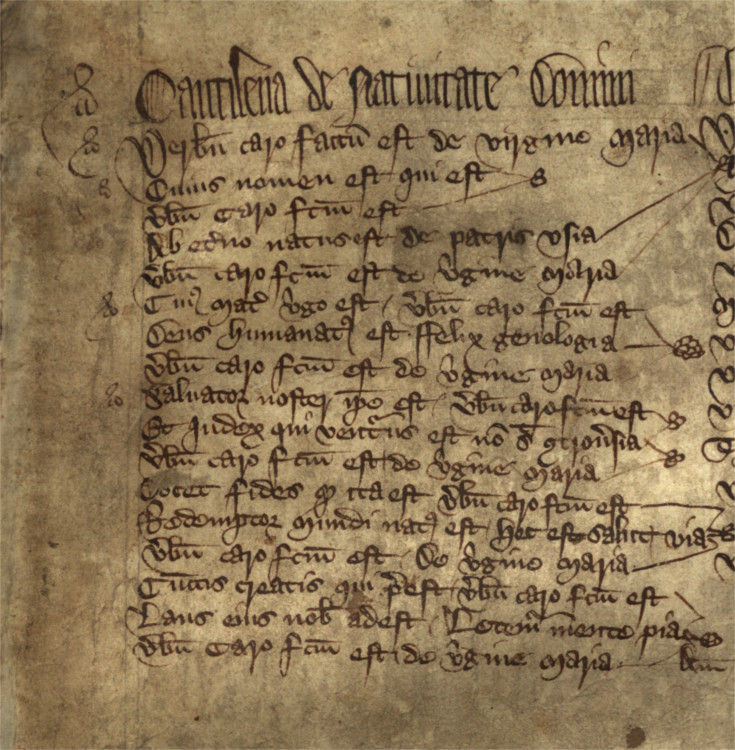
The next song which appears on the right hand margin opens with the line:
Vale mat[er] Christi v[ir]go regina inter mea spes
[Hail royal Mother of Christ, my hope is in you]
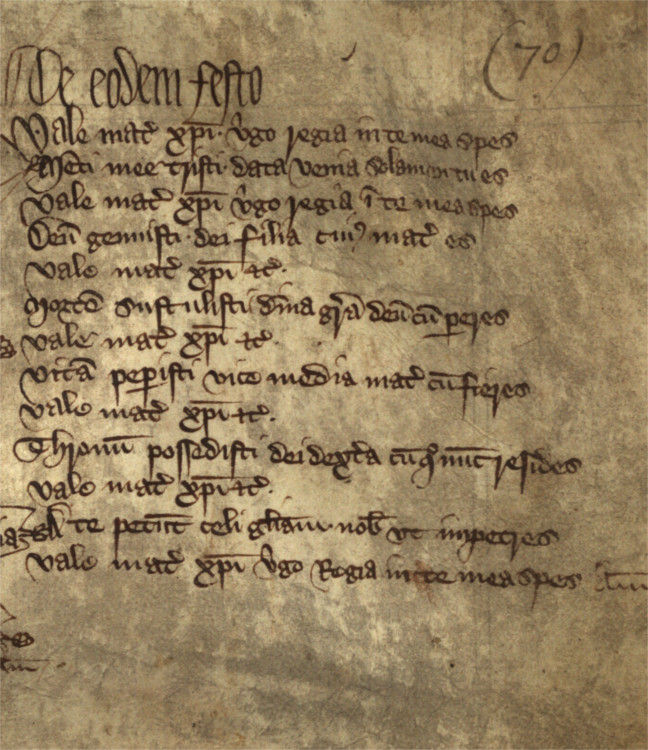
It is a great delight that the Library has seen fit to make available not just these songs but all of the other unique content of the Red Book of Ossory in digital format for a worldwide audience to view, here at this link:
Librarian and Archivist

Dr Susan Hood
RCB Library
Braemor Park
Churchtown
Dublin 14
D14 N735
01–4923979
librarian@ireland.anglican.org
